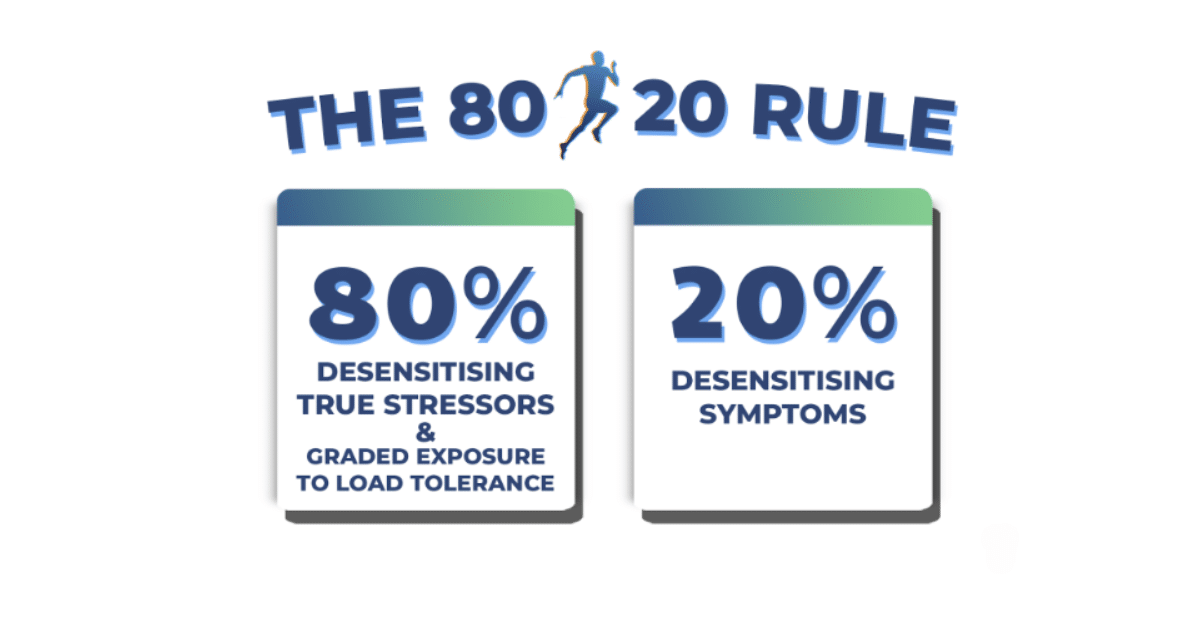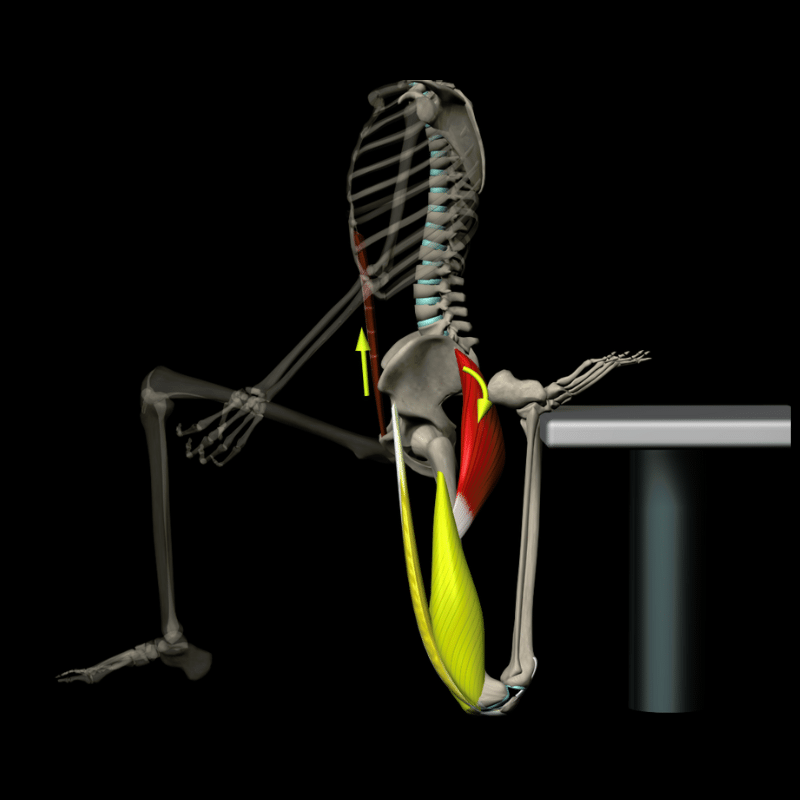Anterior knee pain (AKP) includes multiple conditions, with patellofemoral pain being the most common. It can affect many people’s success in the gym and in day-to-day life.
Clinical findings associated with AKP
According to Mc Clinton et al. 2020 clinical findings associated with AKP may include the following:
- patellar hypermobility
- hypo-mobility
- impaired quadriceps or hip muscle performance
- dynamic knee valgus
- foot over-pronation
- impaired mobility of anterior-lateral thigh soft tissues
- chondral lesions
- synovial, bursae or tendon reactivity
- fear-avoidance beliefs
While each person’s pain will be unique, reproduction of retropatellar or peripatellar pain during squatting and functional activities that load the patellofemoral joint in a flexed position, such as stair climbing or descent will be most common (Willy et al. 2019).
Effective management of AKP
The three components to effective management of anterior knee pain are agreed upon in the literature (McClinton et al. 2020) are:
- Patient education
- Pain management
- Load control and progression, with an emphasis on exercise therapy.
The ‘Go-To’ Physio Approach
My own ‘Go-To’ Physio approach to anterior knee pain is simple. I will take a good examination of the knee joint and reassure the patient if nothing sinister is present.
We will then achieve pain management and load control and progression via a combination of hands on treatment and powerful rehab exercises that I will outline below.
Before I outline these powerful rehab exercises, it is important to ‘understand the why’ behind everything you are doing so you can have confidence to help your patient get long lasting results.
I ask myself three ‘Go-To’ Physio Critical Thinking Questions from my ‘Happy Progression Patients Book (O’Sullivan, 2022) in more detail:
- Am I designing a treatment plan for the root problem or just the symptoms?
- What ISN’T happening that if it was happening would eliminate the symptoms and stand the test of time?
- What IS happening that if it wasn’t happening would eliminate the symptoms and stand the test of time?
The answer to these questions empowers you to design rehab exercises that not only solve the root problem but also ensure your patient can be successful in the real world.
I then prescribe my rehab exercises using the ‘Go-To’ Physio 80/20 Rule (O’Sullivan, 2022).

I will spend 20% of time on helping the symptoms to settle down and 80% of my time getting everything else doing its job.
The power of this approach is that we then strive to treat the true cause to get long lasting results with our patients or clients.
3 Powerful Anterior Knee Pain Exercises
Here are three powerful anterior knee pain exercises that follow the ‘Go-To’ Physio 80/20 rule that will help your patients:
- Chair 3D Quadriceps Stretch
As mentioned by Mc Clinton et al. 2020, impaired mobility of anterior-lateral thigh soft tissues can be a common clinical finding with anterior knee pain. Therefore this 3d quad stretch below will help restore range of motion and very often contribute to decreasing your patient’s pain exercise.
Here is a quick video demonstration from my Anterior Knee Pain course with Muscle and Motion:
2. Sit To Stands With Midfoot Intent
This is a simple yet extremely powerful exercise I also cover in the Anterior Knee Pain Course and can change your patient’s pain experience very quickly while allowing them to do more ‘pain free’ movements in the gym.
The key with this exercise is to get your patient to imagine ‘squashing an orange’ to initiate the rise from the chair. This ensures they take the weight off their heel and onto the midfoot.
This helps the Soleus, Hamstrings and Glute Max do more work so Quadriceps has to do less work and helps bring about a quick ‘processing change’ for the nervous system and hence less pain doing this activity.
While this is a powerful strategy, it still requires a ‘top-down’ conscious intention and this is not realistic to do all the time in the real world.
This is where bridging the gap from low to high-level rehab is non-negotiable for my ‘Go-To’ Physiotherapists that I mentor in order for the patient to move with ‘thoughtless, fearless movement’ (Gifford, 2013).
And the Soleus Slouch is a powerful way to do this.
3. Soleus Slouch
This is an exercise I came up with to solve the problem of the Quadriceps and/or the Lower Back muscles doing too much work while the Soleus, Hamstrings and Glutes were not doing enough work.
The Soleus Slouch solves this problem and gives the Soleus, Hamstring and Glutes an opportunity to work together without the ‘Quadriceps’ or ‘Lower Back Muscles’ taking over if performed correctly.
Ensuring the weight is on the midfoot throughout and relaxing the low back ‘forces’ the lower limb muscles to do more work.
This can help ‘alter’ the processing changes that happen at the spinal cord for when a patient is taking load through the lower limb and hence change the ‘pain experience’ very quickly for a patient.
The exercise should be ‘free from pain’ throughout and if the patient cannot keep the knee flexed and you find it ‘snapping back’ there are more than likely not ready for this progression just yet.
So there you have it. 3 powerful anterior knee pain exercises that can help your patients so you can become the ‘Go-To’ Trainer in your town.
For regressions and progressions of all these exercises, please visit my Anterior Knee Pain Course here.
Become the go-to expert in treating Anterior Knee Pain!
Gain the knowledge, tools, and expertise you need to identify, assess, treat, and prevent Anterior Knee Pain.
Check out our Anterior Knee Pain online course!
Reference:
- Gifford, L. (2021). Louis Gifford Aches and Pains Book One: Aches and Pains Sections 1-14. [online] Amazon. Philippa Tindle.
- McClinton, S.M., Cobian, D.G. and Heiderscheit, B.C. (2020). Physical Therapist Management of Anterior Knee Pain. Current Reviews in Musculoskeletal Medicine, [online] 13(6), pp.776–787. doi:https://doi.org/10.1007/s12178-020-09678-0.
- O’Sullivan, D. (2022). Happy Progressing Patients: How To Skyrocket Your Confidence, Thrive in Private Practice, and Have a Fully Booked Calendar as The ‘Go-To’ Physio in Your Town. Createspace Independent Publishing Platform.
- Willy, R.W., Hoglund, L.T., Barton, C.J., Bolgla, L.A., Scalzitti, D.A., Logerstedt, D.S., Lynch, A.D., Snyder-Mackler, L. and McDonough, C.M. (2019). Patellofemoral Pain. Journal of Orthopaedic & Sports Physical Therapy, 49(9), pp.CPG1–CPG95. doi:https://doi.org/10.2519/jospt.2019.0302.
